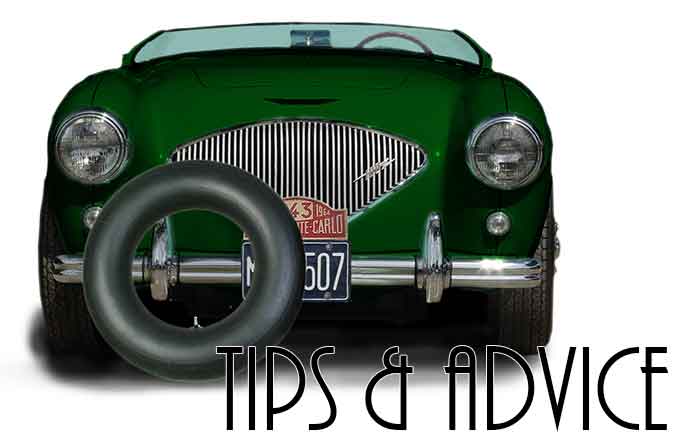
Running Rings
Modern cars are almost absurdly safe and reliable. So much so that it's easy to forget those days when any journey of 100 miles or so would pretty much guarantee seeing plenty of expired motors and, sadly, a few things you'd rather forget. But we love to drive these old treasures and we owe it to them, if not to ourselves, to take the necessary care to make the experience as safe and trouble-free as possible. Here are a few thoughts on that score.
Storage
Tyres and tubes are easily damaged by heat, frost and sunlight. That's why all Classico Premier tubes are individually boxed. Keep your rubberware in a cool, frost-free dry, and dark environment. Keep your tubes in their original boxes and never hang them on hooks. If storing your car, keep the tyres at least partially inflated and off the ground.

Racing Tyres
Racing tyres are designed purely for competition use. Few carry the legally required DOT markings, and for good reason. They're intended for limited use under strictly controlled conditions, not for potholed streets, suspect weather and spilt diesel. Quite apart from each tyre constituting a spearate offence, they're simply not safe on public roads.
Tyre Pressures
It's not possible to give actual figures for tyre pressures, given the disparity of vehicle weights, rim sizes and suspecion set-ups. In general though, it's far better to err on the high side than the low. Low pressures increase tyre wear, use more fuel and make tyres much more susceptible to sidewall damage. Don't inflate beyond 40psi (2.8 bar) without a safety cage.
You'll often hear of people lowering tyre pressures for wet weather. For vintage tyres, this almost never a good idea. An increase of a couple of psi can open the tread pattern and increase wet grip. Even in the dry, a small increase in pressure can improve grip, giving a useful method of improving handling. If the car's understeering, raise the front pressure. For oversteer, raise the rear. Make small changes and ensure you're not putting other road-users at risk.

Tyre Fitting
The simple rule for tyre fitting is, unless you really know what you're doing, leave it to the experts. Tyre fitting machines are designed to protect the critical bead area, which can be easily damaged by tyre levers. Tubes add an extra gotcha, being easy to pinch and destroy.
Sometimes there'll be difficulty getting a tyre bead to pop into place. Don't be tempted simply to keep inflating; a tyre or rim failure can prove fatal. For reluctant tyre beads, don't inflate beyond 40psi (2.8 bar) outside a safety cage, or 64psi (4.4 bar) inside a cage. If it still doesn't seat, check the rim diameter with a ball tape.
For tubed tyres, always fit a new rim band and the correct tube.


